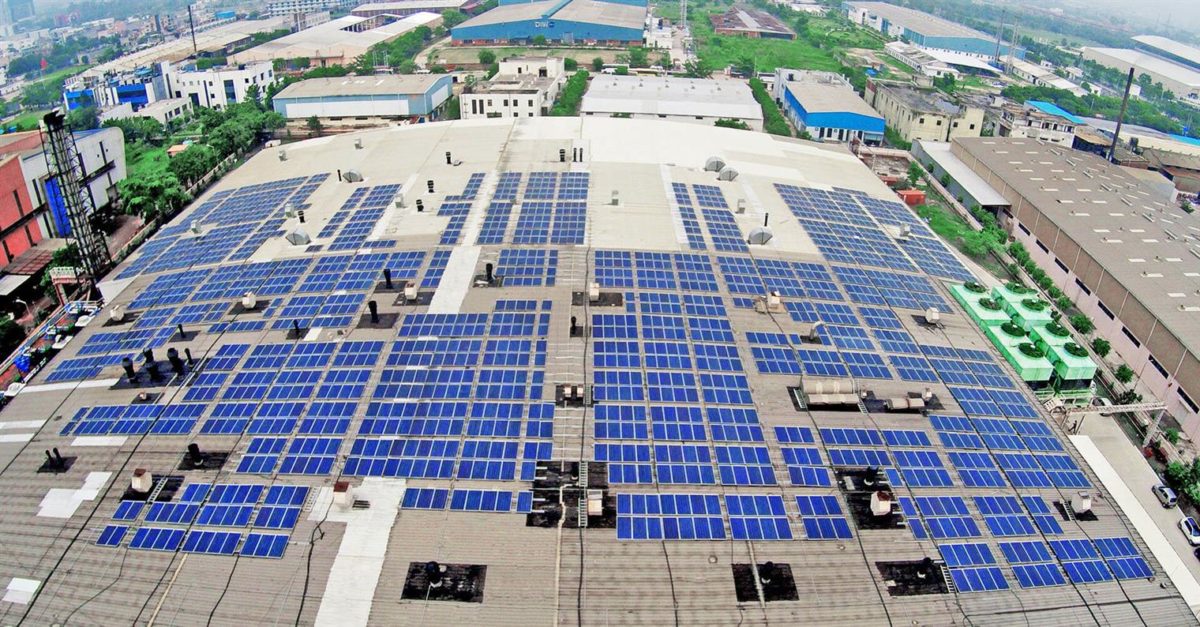Manufacturing sector is the biggest adopter of rooftop solar among end user industries in India, accounting for 14% market share. It is followed by infrastructure and real estate (9%), education (8%), and automotive and textiles (7% each)—according to Bridge To India’s solar rooftop analytics report for FY2019.
Annual installation in manufacturing increased sharply to around 130 MW in FY2019—with preference for larger system sizes (>250 kW). Textiles, automotive and energy sectors are also biased towards larger sizes, while education and infrastructure sectors have relatively smaller installations.
Leading players in textiles sector
The top 3 developers accounted for 43% of the rooftop installations in textile sector in FY2019, with SunSource as the biggest developer (24%) followed by CleanTech Solar (16%) and Amplus Solar (3%).
In EPC segment, 28% developers opted for self-EPC (EPC work completed in-house by developers), instead of hiring a contractor. Among EPC players, Sunsure emerged as the biggest rooftop installer with 24% share, followed by Solar Square (18%) and Tata Power (10%).
Overall market
The Indian rooftop solar market has grown rapidly at 66% annually in the last four years. The cumulative installed capacity of rooftop solar stood at 4,375 MW at the end of March 2019, with 1,836 MW having been added in fiscal year 2018-19. Of that total figure, commercial and industrial (C&I) rooftops accounted for 3,066 MW, residential 690 MW and public sector installations 619 MW – according to the rooftop solar map produced by Bridge To India.
The growth in rooftop solar is widespread with northern region having 35% share, southern (29%) and western (26%). Commercial and industrial (C&I) consumers continue to dominate with over 70% share of the total installed capacity.
Overall consumer demand is very strong, but market growth is being held back by poor implementation of net metering policy and limited financing options in smaller C&I and residential consumer segments.
Further, the market is highly fragmented and localized; the share of small, local contractors is about 55% but varies highly from state to state.
This content is protected by copyright and may not be reused. If you want to cooperate with us and would like to reuse some of our content, please contact: editors@pv-magazine.com.









If the capacity of solar peak generation is less than the load demand, there is no need for net metering, as most of the energy is used locally where it is generated. Only permission is needed from the grid for connecting to the grid. In any case the consumer will get the benefit as it is reflected in reduced energy consumption which is reflected in the bill.
This may be considered and if acceptable on both sides it can be implemented. It reduces net metering complications.
If the net metering is the difficulty, it need not be insisted, if the peak solar generation is less than the load demand.
In any case the solar consumption is reflected in the reduced consumption and accordingly the billed amount by the supplier will be reduced. Only the supplier permission is needed for connecting to the grid. By this the net metering complications will be reduced. If it is acceptable on both sides it can be implemented.